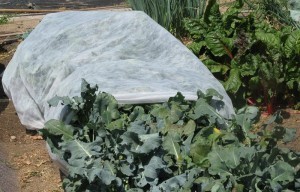Protecting Garden and Landscape Plants During Cold Weather
go.ncsu.edu/readext?396084
en Español / em Português
El inglés es el idioma de control de esta página. En la medida en que haya algún conflicto entre la traducción al inglés y la traducción, el inglés prevalece.
Al hacer clic en el enlace de traducción se activa un servicio de traducción gratuito para convertir la página al español. Al igual que con cualquier traducción por Internet, la conversión no es sensible al contexto y puede que no traduzca el texto en su significado original. NC State Extension no garantiza la exactitud del texto traducido. Por favor, tenga en cuenta que algunas aplicaciones y/o servicios pueden no funcionar como se espera cuando se traducen.
Português
Inglês é o idioma de controle desta página. Na medida que haja algum conflito entre o texto original em Inglês e a tradução, o Inglês prevalece.
Ao clicar no link de tradução, um serviço gratuito de tradução será ativado para converter a página para o Português. Como em qualquer tradução pela internet, a conversão não é sensivel ao contexto e pode não ocorrer a tradução para o significado orginal. O serviço de Extensão da Carolina do Norte (NC State Extension) não garante a exatidão do texto traduzido. Por favor, observe que algumas funções ou serviços podem não funcionar como esperado após a tradução.
English
English is the controlling language of this page. To the extent there is any conflict between the English text and the translation, English controls.
Clicking on the translation link activates a free translation service to convert the page to Spanish. As with any Internet translation, the conversion is not context-sensitive and may not translate the text to its original meaning. NC State Extension does not guarantee the accuracy of the translated text. Please note that some applications and/or services may not function as expected when translated.
Collapse ▲Extremely cold air is on the way – scheduled to arrive in full force tonight with low’s dipping into the lower twenties and even colder temperatures expected over the weekend. Temperatures are not expected to fall below the average minimum for our hardiness zone (Zone 8a, 10-15 degrees) so landscape plants rated hardy to zone 8a or lower should not be seriously damaged. Temperatures this cold will likely damage cold sensitive plants such as sago palm, oleander, sandankwa viburnum and shrubs rated as hardy to zone 8b and above. These plants should be protected to minimize cold weather damage.
Vegetable gardens are at greater risk than landscape plants. Temperatures in the teens will likely damage vegetable crops – even relatively hardy crops like cabbage, kale and collards could be damaged. More tender cool season crops such as lettuce, beets, Chinese cabbage, and chard could be killed if unprotected. Moderate winds will compound damage to unprotected crops by increasing dessication of plant leaves.
Here are some tips for helping your cold sensitive landscape plants and cool season vegetables survive winter cold snaps:
- If soils are dry, water the garden or landscape well at least a day before extreme cold sets in. Moist soil holds heat longer and is more insulating than dry soil. Due to recent rains, soil moisture levels should be good during this cold blast. Do not over water in winter – wet soils increase root and crown rot diseases.
- Cover cold sensitive plants when night time lows are expected to dip below 20 degrees F. Cover vegetable crops when temperatures are predicted to fall below the mid 20s. Plants will be fine covered for a couple of days through extreme cold weather.
- If you do not have any floating row cover or frost protection fabric, cover plants with old blankets or other insulating materials. Double layers provide more protection than single layers. Make sure covers extend down to the ground and are securely held down by bricks or staples. Most of the protection provided by covers is from the soil warmth they trap in, which would otherwise radiate out into the night.
- Lay row cover fabrics, blankets, or double layers of plastic directly over crops or build a low frame or hoops out of PVC or other materials to create a mini greenhouse over crops. Uncover crops as soon as milder temperature return.
- Smaller plants can be covered with a thick layer of dry leaves or pine straw. For larger shrubs such as figs, you can build a wire cage around individual plants or beds to help hold leaves in place and cover with an old sheet. Cover plants completely so no green is exposed for best protection.
- Plants growing in containers are more sensitive to cold than plants growing in the ground. Move containers to protected locations such as against the house under the eaves, onto a porch, in a garage, or under dense trees. If containers cannot be moved, wrap the entire container in thick layers of insulating materials such as bubble wrap or old blankets, or build a wire cage around them and fill with straw.
- Open blossoms and blossom buds showing color are more sensitive to cold than other plant parts. If you have camellias, blueberries or other early blooming shrubs with open blossoms and wish to protect the blossoms, completely cover the bushes with row cover or blankets. Make sure covers extend all the way down to the ground and they are staked down. Blueberries do not open all their blossoms at one time so even if you lose some blooms now, your crop will not be lost.
- Strawberry plants should be covered even if blossoms are not present.
For more information call (910)259-1235





